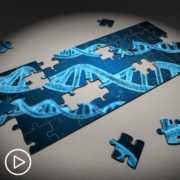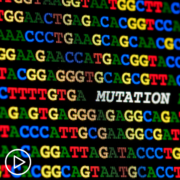What is Metastatic Breast Cancer and How Is It Diagnosed? from Patient Empowerment Network on Vimeo.
Metastatic breast cancer (MBC) may progress differently than the earlier stages of breast cancer. Dr. Jane Lowe Meisel defines metastatic breast cancer and discusses key tests involved in an MBC diagnosis.
Jane Lowe Meisel, MD is an Associate Professor of Hematology and Medical Oncology at Winship Cancer Institute at Emory University. Learn more about Dr. Meisel here.
See More From INSIST! Metastatic Breast Cancer
Related Resources:
Transcript:
Katherine:
This webinar is focused on metastatic disease, would you define metastatic breast cancer for us?
Dr. Meisel:
Absolutely. And I think metastatic breast cancer is one of those terms that as doctors, we throw around a lot and often times don’t stop to check understanding as to what that means.
And what metastatic breast cancer is and means, is breast cancer that is spread outside of the breast and surrounding lymph nodes to another organ system. So, metastatic breast cancer, some of the most common places where it spreads are to the bone, to the skin, to the lungs, to the liver, to the brain. There are other places it can spread to. I’ve seen it on the ovaries, in the GI tract. But basically, when breast cancer spreads outside of the breast and surrounding lymph nodes to another organ system, that’s when we consider it metastatic.
Katherine:
How can a patient ensure they are getting an accurate diagnosis?
Dr. Meisel:
Another good question. And I think the most important thing when you’re considering whether or not you have a diagnosis of metastatic breast cancer is to get a biopsy of that metastatic site. So, you wouldn’t want to assume, just based on a CT scan that shows something in the bone that you have metastatic disease. Ideally, we would biopsy that spot or some spot that was indicative of metastatic disease to actually prove that there is metastatic cancer in that distant site.
Because sometimes it’s nothing. Sometimes you get scans and a little bone abnormality, maybe a scar from a prior fall. And then also, sometimes if it is metastatic, sometimes the breast cancer, the hormone receptor status for example can change from the primary site to the metastatic site. And that might impact treatment. So, it’s important to both get a metastatic biopsy to confirm diagnosis. And also, to understand what the treatment plan might be. And I think also for patients, just to make sure that you understand what your stage is, ask your doctor.
Say, what is my stage? Because sometimes doctors think people understand and they don’t actually, so checking that understanding is important. But if your doctor or provider is not actively checking your understanding, you can check it with them to make sure that if you are metastatic or have Stage IV disease, which is another way we define metastatic or talk about metastatic cancer, that you make sure you have the definition right.
Katherine:
Right, right. So, once someone has been diagnosed with metastatic disease, are there key tests that’re used to help understand how their disease may behave and progress?
Dr. Meisel:
Absolutely. So, I think the first thing as I said is that metastatic biopsy. Another thing that’s very important is understanding the hormone receptor status and the HER2 status of the breast cancer. And probably for a lot of you listening, if you have listened to metastatic breast cancer webinars before or maybe know someone or have had a diagnosis yourself, you’re well versed in this. But for some who may not be, I think a quick overview is maybe helpful. Breast cancer can be divided into three different subtypes. So, triple-negative, estrogen-positive or HER2-positive. And estrogen-positive breast cancer is the most common kind.
That tends to be driven by hormones and often treated with what we call, endocrine therapy. So, anti-estrogen pills, things like Tamoxifen or aromatase inhibitors are examples of that. And that’s one kind. And then there’s HER2-positive breast cancer, which is a type of breast cancer that over expresses a marker called HER2. And we now, since we know about that marker, have been able to develop a lot of different treatments that target HER2 selectively.
And can be used to treat that subtype. And then triple-negative is basically estrogen-negative, progesterone-negative and HER2-negative. And that type of breast cancer traditionally was treated essentially only with chemotherapy. But now we’ve had some breakthroughs, which we’ll talk about I think later in this program talking about immunotherapy and more targeted therapy for that. But those subtypes help determine how we treat patients. And it also can sometimes predict behavior.
I would say one of the other things that helps us predict behavior of metastatic disease is, if a patient had early-stage disease before, how quickly they developed metastatic disease. So, for example, someone who develops estrogen-positive metastatic breast cancer 12 years out from their original diagnosis is statistically more likely to have a slower progressing course of disease than someone who develops triple-negative metastatic disease very soon after their initial treatment. So, I would say that’s the primary thing we look at in terms of determining treatment plan and then predicting overall course.









